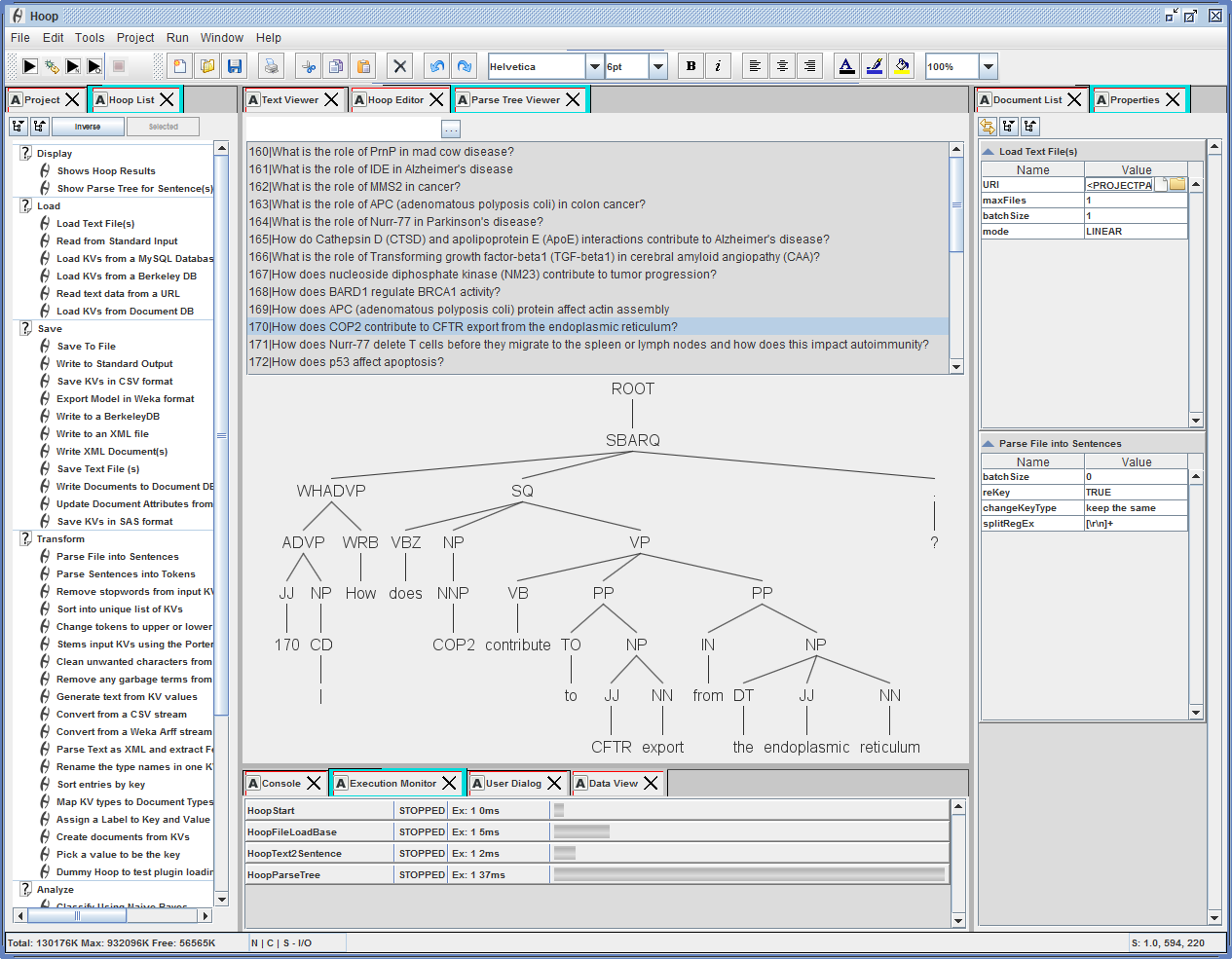-
Notifications
You must be signed in to change notification settings - Fork 0
Home
A text mining and language exploration workbench in Java. Primarily designed for event extraction and text-based event forecasting for interactive narrative applications, the workbench is a generic text and language machine learning sandbox that can be adopted to a wide variety of tasks. Hoop is composed of a collection of modules (hoops) each of which can take linguistic input from one, process it and pass it onto another. Combining those modules or hoops allows you to create complex analysis systems.
![]()
Features
1. Drag and Drop editor allowing you to stitch together custom tools and applications
2. Rich API and developer support for rapid text analysis prototyping
3. Large set of language oriented and related libraries with comprehensible API, see below
Many of the popular language processing tools are natively available directly from within the IDE. For example, shown below is a Hoop graph in which the last hoop is a visualization wrapper for the Standford NLP parse tree visualization panel. Below is an example of a graph that parses and shows a text file containing TREC questions.

Related Narrative Publications
1. Van Velsen, M., Williams J., Verhulsdonck G., Narrative Concepts for AI Driven Digital Interactive Story Telling, in proceedings of the 2009 ICIDS conference
2. Van Velsen, M., Williams J., Verhulsdonck G., Concepts for Interactive Digital Storytelling: From Table-top to Game-AI, poster in proceedings of the 2009 AIIDE conference
3. Van Velsen, M., Williams J., Verhulsdonck, G., Concepts for Interactive Digital Storytelling: From Table-top to Game-AI, in proceedings of the fifth conference on Artificial Intelligence and Interactive Digital Entertainment (AIIDE), 2009
4. Jhala, A., Velsen, M., Challenges in Development and Design of Interactive Narrative Authoring Systems, a Panel, in proceedings of the 2009 AAAI Spring Symposium
5. Van Velsen, M., Towards Real-time Authoring of Believable Agents in Interactive Narrative, in proceedings of the 8th International Conference on Intelligent Virtual Agents (IVA-08), 2008
1. Forster, F. (1985). Aspects of the Novel. San Diego: Harcourt Brace Jovanovich
2. Gee, J. (2005). An Introduction to Discourse Analysis. New York: Routledge
3. Bal, M. (1997). Narratology : introduction to the theory of narrative. Toronto Buffalo: University of Toronto Press
4. Chatman, S. (1980). Story and discourse: narrative structure in fiction and film. Ithaca, N.Y: Cornell University Press
5. Genette, . Narrative discourse : an essay in method. Ithaca, N.Y: Cornell University Press, 1983
6. Auerbach, E. (2003). Mimesis : the representation of reality in Western literature. Princeton, N.J: Princeton University Press
7. Wood, J. (2008). How fiction works. New York: Picador
8. Bal, M. (1997). Narratology : introduction to the theory of narrative. Toronto Buffalo: University of Toronto Press
9. Leitch, T. (1986). What stories are : narrative theory and interpretation. University Park Pa: Pennsylvania State University Press
History
Initially written as a set of support code for graduate classes and smaller narrative projects, the code is slowly growing to encompass a larger text-based data mining framework.
This source set includes code written for other various graduate courses and is part of a larger research effort in the field of interactive narrative (IN). Language Technologies (CMU, LTI http://www.lti.cs.cmu.edu/) Courses that have contribute to this source base are
- 05x834 Applied Machine Learning
- 11x719 Computational Models of Discourse Analysis
- 11x741 Information Retrieval
- 11x791 Software Engineering for Intelligent Systems